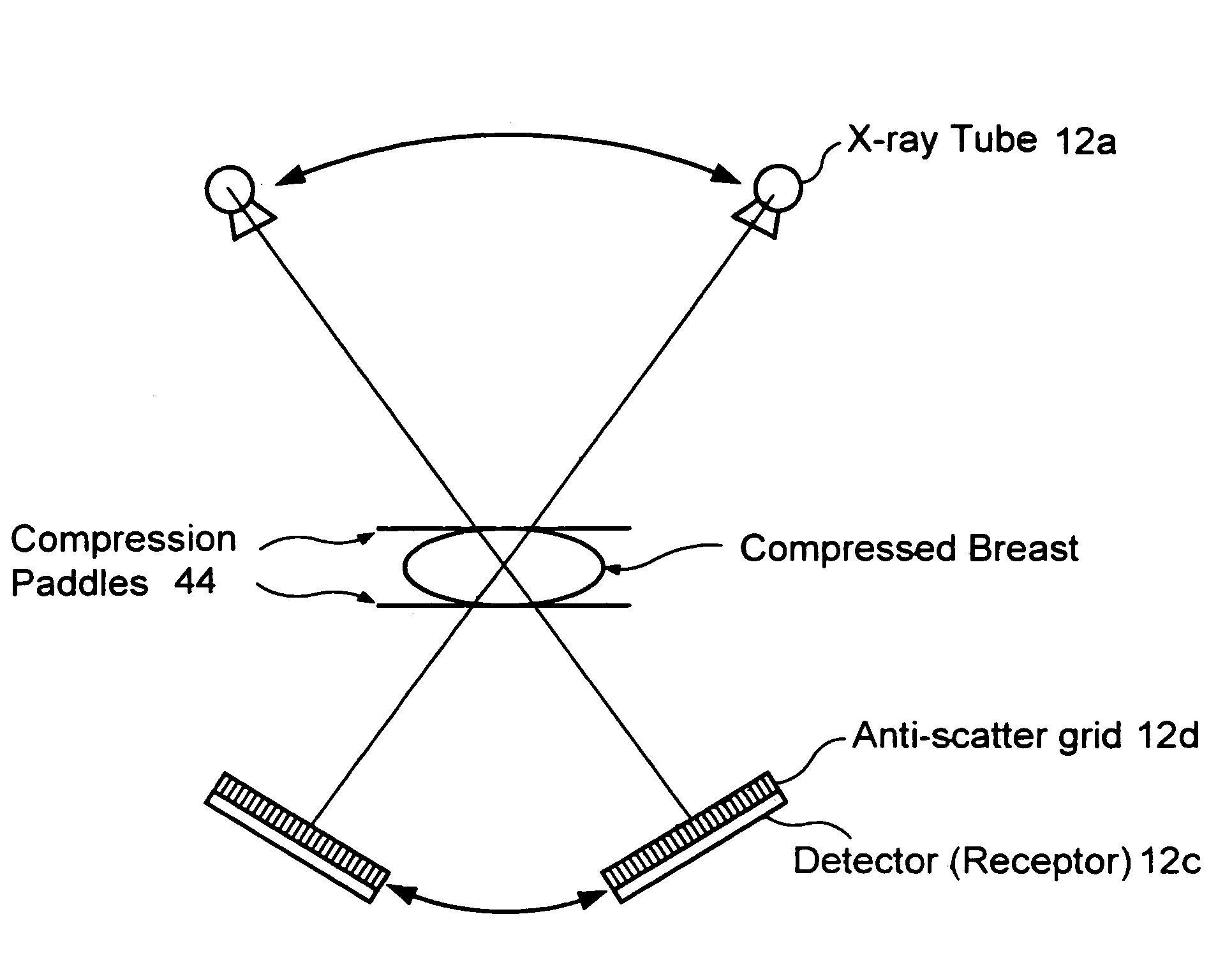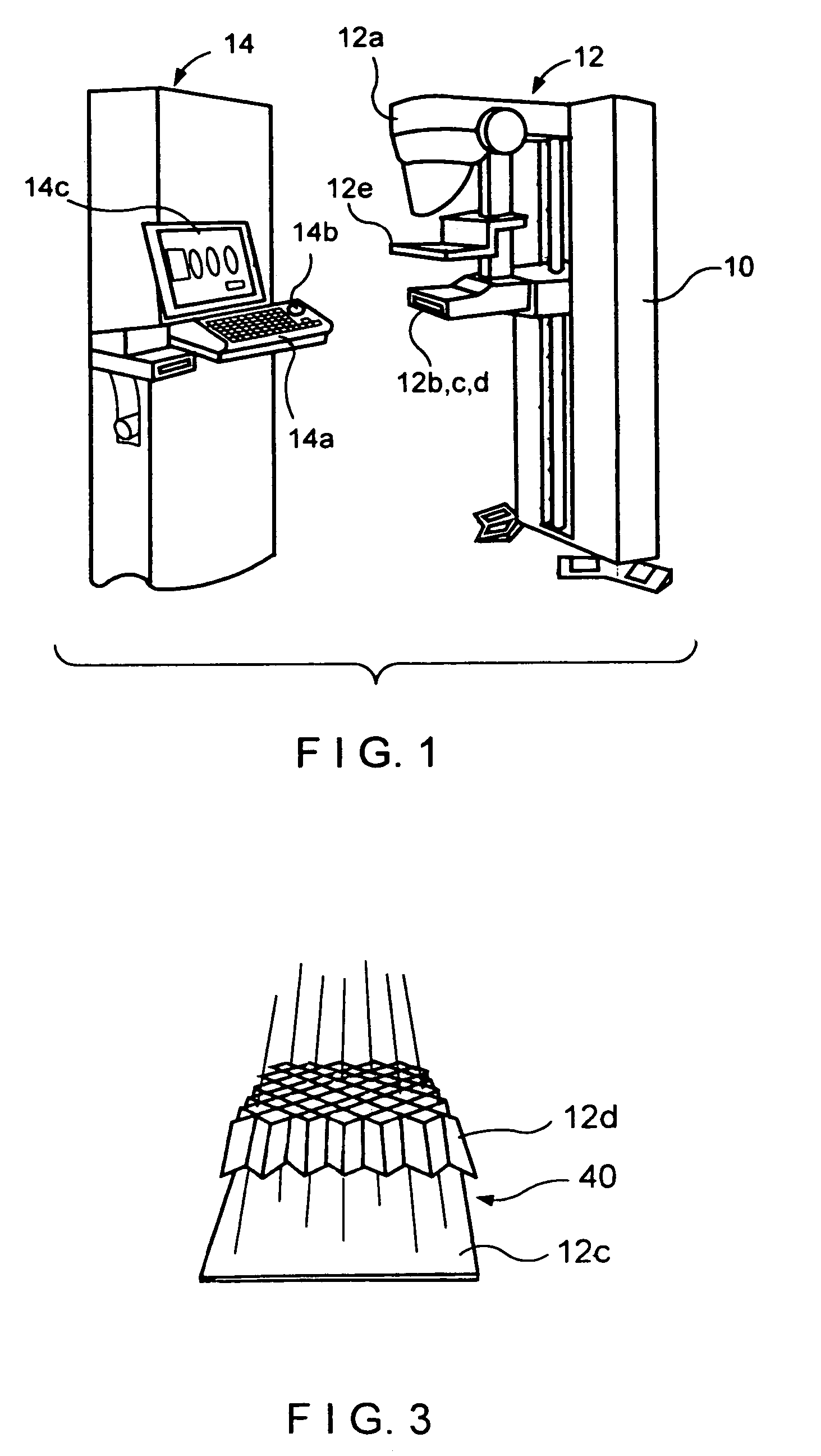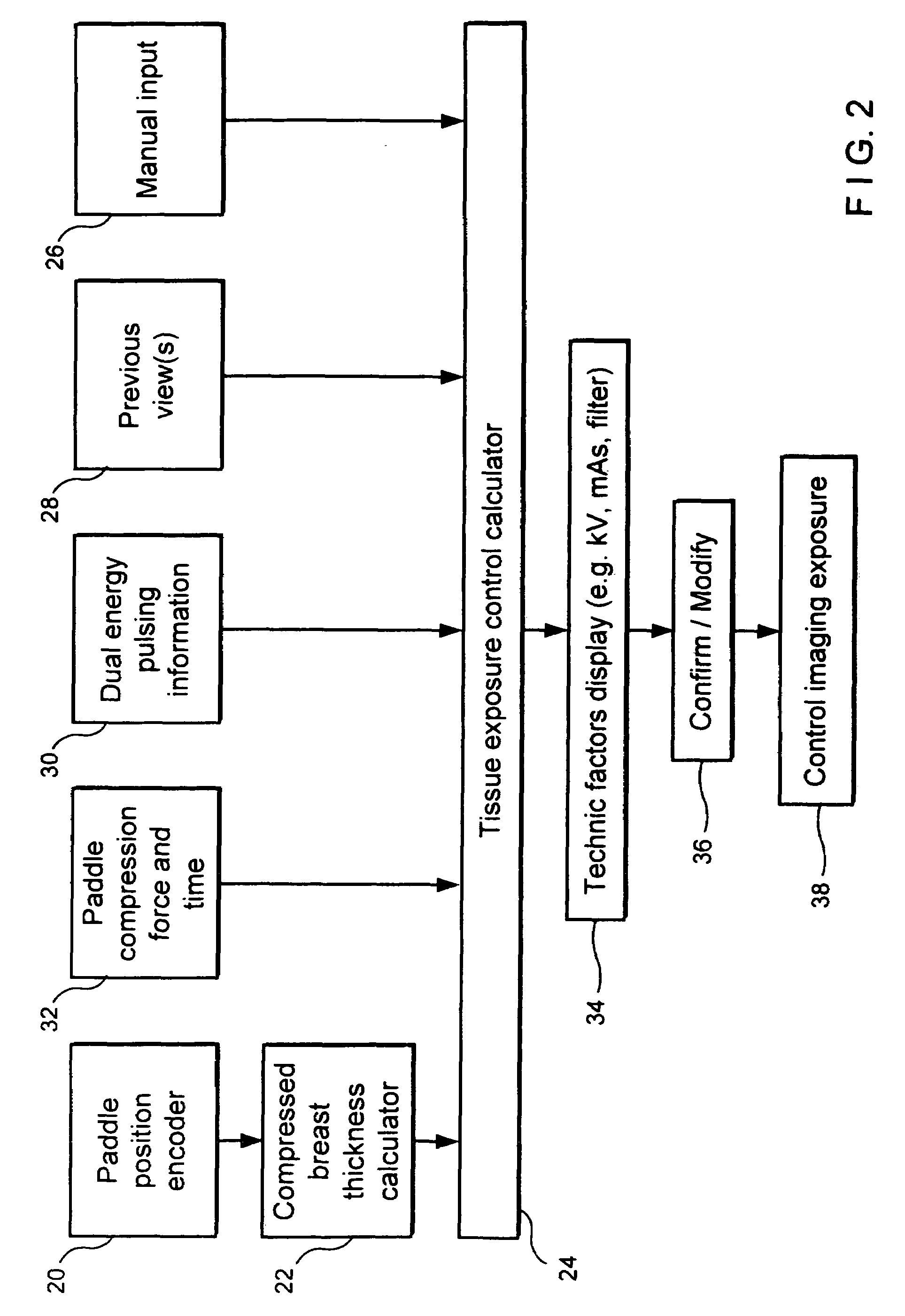Full field mammography with tissue exposure control, tomosynthesis, and dynamic field of view processing
a mammography and tissue technology, applied in the field of full-field mammography with tissue exposure control, tomosynthesis, and dynamic field of view processing, can solve the problems of limiting the field of view for tomosynthesis image, impede access, and are not considered practical for flat-panel image receptor use, so as to avoid a reduction of the field of view, improve the tomosynthesis of mammography, and achieve effective and advantageous exposure control
- Summary
- Abstract
- Description
- Claims
- Application Information
AI Technical Summary
Benefits of technology
Problems solved by technology
Method used
Image
Examples
Embodiment Construction
[0018]Referring to FIG. 1, a mammography system currently available from the common assignee under the trade name Selenia except for the new features described herein, comprises a stand 10 supporting a C-arm 12 that can move up or down along stand 10, to a selected height, driven by motor(s) controlled by a health professional operating the system. C-arm 12 carries an x-ray tube at an upper end 12a, a breast tray 12b at a lower end. Tray 12b covers a flat panel x-ray image receptor 12c, spaced from the tray by a focused anti-scatter grid 12d (which may be retractable so that it can be removed from the space between tray 12b and receptor 12c). C-arm 12 also carries a compression paddle 12e that is between source 12a and breast tray 12b and is motorized to move away from tray 12b so a patient's breast can be fitted between tray 12b and paddle 12e, and closer to tray 12b so the patient's breast can be compressed and immobilized. The movement of paddle 12e is motorized and controlled by...
PUM
 Login to View More
Login to View More Abstract
Description
Claims
Application Information
 Login to View More
Login to View More - R&D
- Intellectual Property
- Life Sciences
- Materials
- Tech Scout
- Unparalleled Data Quality
- Higher Quality Content
- 60% Fewer Hallucinations
Browse by: Latest US Patents, China's latest patents, Technical Efficacy Thesaurus, Application Domain, Technology Topic, Popular Technical Reports.
© 2025 PatSnap. All rights reserved.Legal|Privacy policy|Modern Slavery Act Transparency Statement|Sitemap|About US| Contact US: help@patsnap.com



